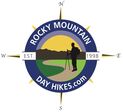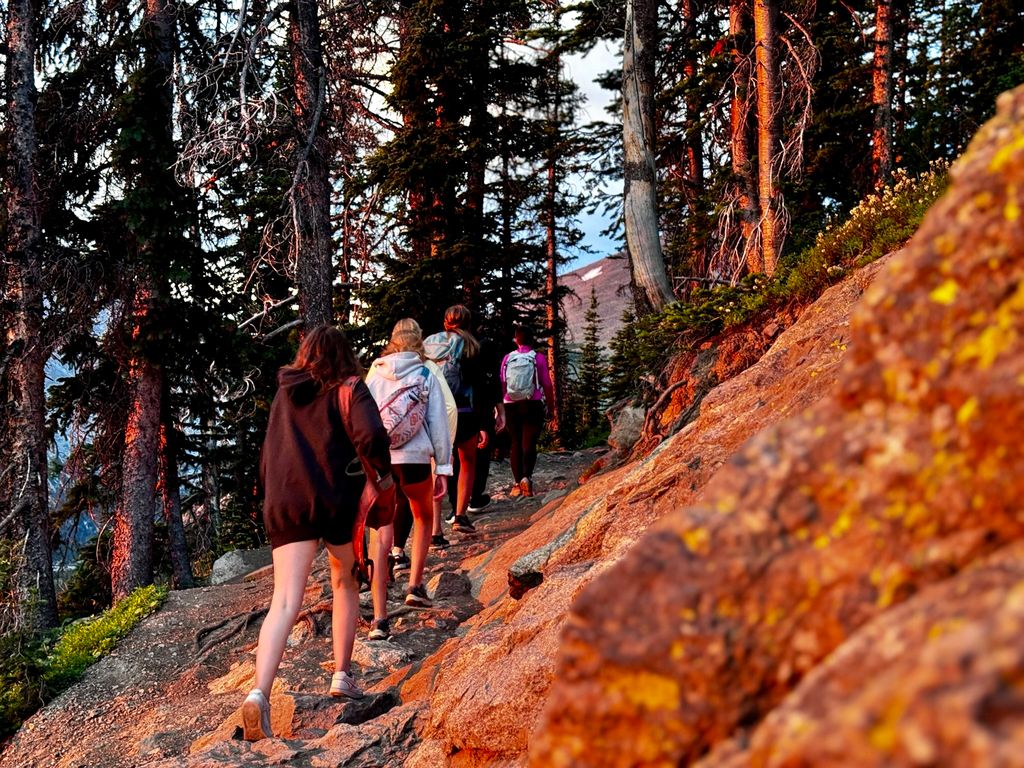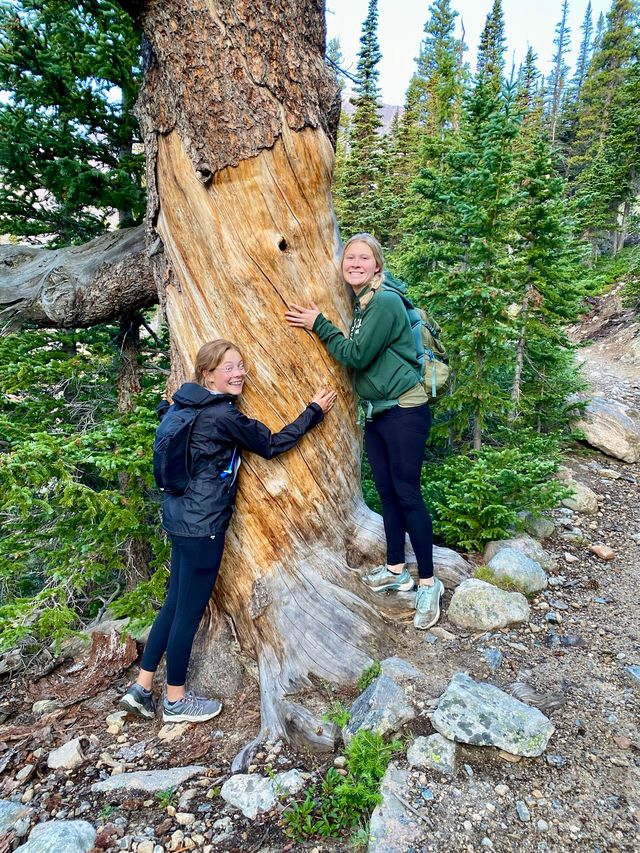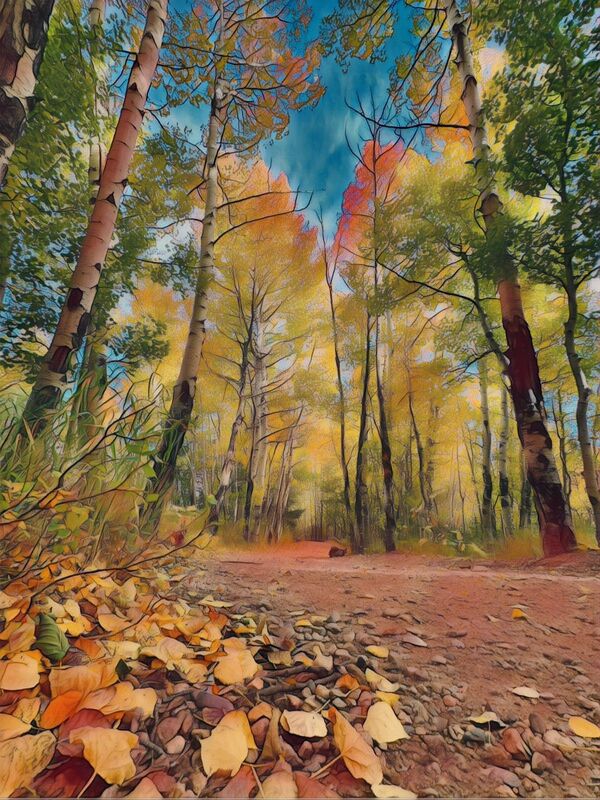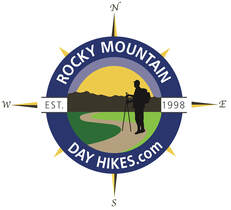|
Notes from the
Trail |
|
by Jamie Palmesano, Brownfield’s The science and the health benefits of time in Rocky Mountain National Park (all photos by Jamie Palmesano) September in Rocky Mountain National Park (RMNP) is a living symphony: gold aspen leaves shimmering, cool alpine air, and the unforgettable bugle of elk echoing across the valley. It’s beautiful and profoundly good for you. A growing body of research shows that time in nature measurably calms the stress system, sharpens attention, improves mood, and even correlates with longer, healthier lives. Here’s a quick tour through the science, practical “doses,” and exactly how to experience it in Rocky Mountain National Park this fall. The Science of Why Nature Heals Two hours a week is a meaningful goal. According to a large study of nearly 20,000 people from Monitor of Engagement with the Natural Environment Survey, those who spent more than 120 minutes in nature per week were significantly more likely to report good health and high well-being than those who didn’t regardless of whether that time came in one long visit or several short ones. The benefits plateaued around 200–300 minutes. Stress chemistry shifts in minutes. In a real-world “nature pill” experiment, 20–30 minutes outdoors produced a 21% per hour drop in cortisol, our primary stress hormone (salivary alpha-amylase fell even faster). This means even short time outdoors meaningfully quiets the body’s stress response. Risk goes down across the board. According to a paper “The Health Benefits of the Great Outdoors” from the National Library of Medicine, a meta-analysis pooling over 140 studies linked greater greenspace exposure with lower cortisol, heart rate, and diastolic blood pressure, plus reduced type II diabetes (OR≈0.72), cardiovascular mortality (OR≈0.84), all-cause mortality (OR≈0.69), and preterm birth (OR≈0.87)—associations that point to broad, whole-person benefits. Your brain gets a reset. A controlled experiment showed a 90-minute nature walk decreased both rumination (repetitive negative thinking) and activity in the subgenual prefrontal cortex, a brain region tied to depression risk. Interestingly, these effects were not observed after an urban walk, but were seen after being in the great outdoors. Listening matters, too. Natural soundscapes—wind in the pines, bird song, and water are more than ambiance. A synthesis of studies found exposure to natural sounds improved health and mood outcomes and reduced stress, underscoring why quiet, wild places feel restorative. In this paper, the authors explored whether and to what degree natural sounds influence health outcomes using a systematic literature review and meta-analysis, and found that natural sounds provide important ecosystem services, and parks can bolster public health by highlighting and conserving natural soundscapes. Why Rocky Mountain National Park is a “Healing Lab” 355 miles of trails; every elevation, every pace. RMNP spans serene lakeside walks to sky-high tundra hikes, with elevations from about 7,500 to over 14,000 feet. There is something for everyone from flat, handicap accessible trails around a number of gorgeous lakes to boulder laden fields requiring rock scrambling and intense climbing. No matter your age or fitness level, RMNP has something special waiting just for you. Trail Ridge Road crests at 12,183 feet, almost carrying you into the sky where trees give way to tundra and horizon-wide views take your breath away. These classic “awe triggers” that can shrink stress by shifting perspective and giving you a sense of how big and beautiful this world really is. There’s Something Special about September. September in the Rocky Mountains has a soundtrack all its own. The elk rut typically peaks mid-September to mid-October; evenings in Moraine Park, Horseshoe Park, and the Kawuneeche Valley can be unforgettable. The bugle of the elk echo through canyon walls and the Estes Valley. The noise is unmistakable and calls you into the wild. The sound of the aspen leaves quaking in the wind against the sapphire sky is concert itself. If you have never visited Estes Park in September, add it to your bucket list. Our favorite fall hikes include Alberta Falls, Bierstadt Lake, Cub Lake, Deer Mountain, and Lily Lake. Plan for timed entry. From late May through mid-October, RMNP utilizes a timed entry system. The Bear Lake Road Corridor requires the “Timed Entry + Bear Lake Road” reservation during peak hours, which you can reserve at Recreation.gov. If you would like to go to Moraine Park between 5am and 6pm, you will need a timed entry pass, which can be obtained on the first day of the previous month or at 7pm the night before. However, there are numerous destinations that are accessible without a timed entry permit before 9am and after 2pm. A Field Guide to Science-Backed “Doses” of Nature
1) The 20-Minute Reset (any day you can get there)
Creation is generous offering rest without requirements and welcome without walls. Here, stillness is a sanctuary and the wind through pines becomes a gentle benediction. There’s a call to meet the Maker on the trail and in creation’s cathedral, our souls can be restored.
0 Comments
Leave a Reply. |
"The wild requires that we learn the terrain, nod to all the plants and animals and birds, ford the streams and cross the ridges, and tell a good story when we get back home." ~ Gary Snyder
Categories
All
“Hiking -I don’t like either the word or the thing. People ought to saunter in the mountains - not hike! Do you know the origin of the word ‘saunter?’ It’s a beautiful word. Away back in the Middle Ages people used to go on pilgrimages to the Holy Land, and when people in the villages through which they passed asked where they were going, they would reply, A la sainte terre,’ ‘To the Holy Land.’ And so they became known as sainte-terre-ers or saunterers. Now these mountains are our Holy Land, and we ought to saunter through them reverently, not ‘hike’ through them.” ~ John Muir |
© Copyright 2025 Barefoot Publications, All Rights Reserved
